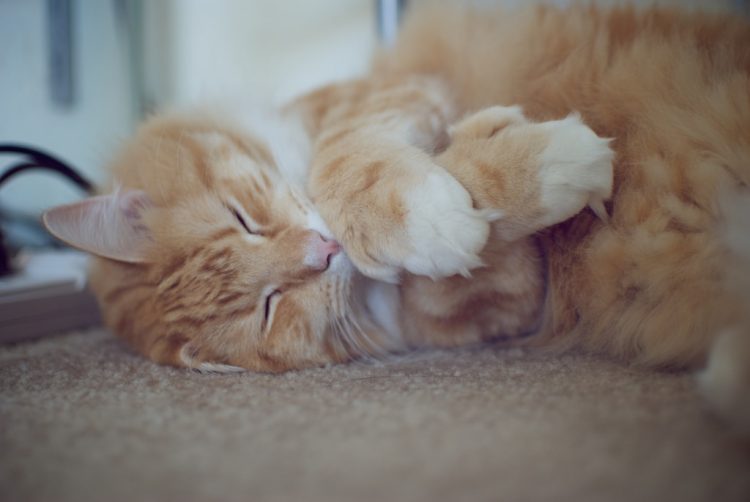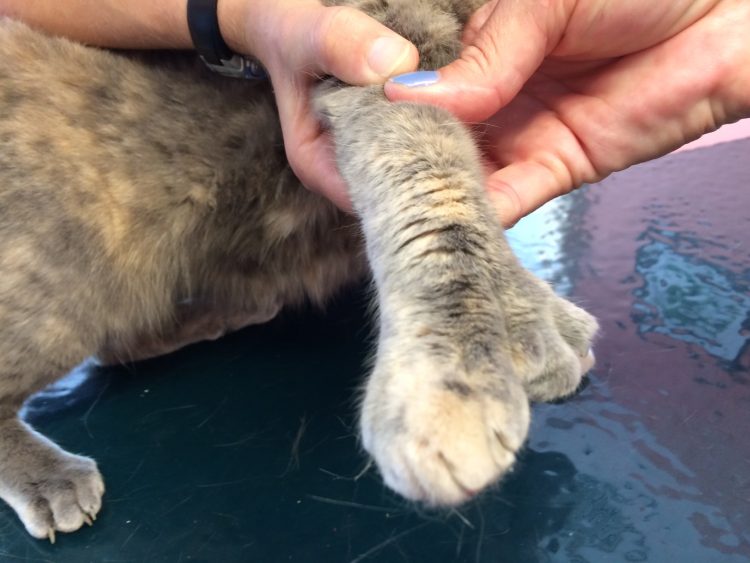
Polydactyly.
A name for a parrot? Poking fun at a girl named Polly? No — but what a great word.
Polydactyly is the congenital, physical anomaly of having more than the normal amount of toes and is very common in cats. I see a bunch of these adorable kitties and did not know until doing a little research that they are much more common along the East Coast of North America, particularly Massachusetts — where I practice.
A Little History
Polydactyl cats have apparently always been popular as ships’ cats. Several outlets report that the mutation spread widely as a result of ships originating in Boston.
Sailors believed the extra toes gave these cats greater climbing ability and better hunting of rodents on the ship. Sailors also thought they were good luck charms at sea.
Maybe this is why most of the polydactyl cats I see have great personalities. They come from a lineage of being respected and pampered on the high seas.
If you take a trip to Key West, check out Ernest Hemingway’s estate, which is now a museum and home to many cats, about half of which are polydactyl. Hemingway was a famous lover of polydactyl cats. Just about everywhere you look around the grounds, you see well-loved cats who look like they’re sporting boxing gloves or mittens.
Special Considerations for Extra Toes
Your normal cat has 5 toes in front and 4 in back, a total of 18.
Most polydactyl cats have the mutation only in the front, with an average of 2–3 additional toes, but cats have been reported to have up to 28 toes.
These kitties tend to have a high “cute” factor because they look like they have “thumbs” or are wearing mittens, snowshoes or fluffy slippers. But depending on where the nails emerge from, these extra toes and the placement of the toes, you need to make sure the nails don’t cause a problem.

Keep an Eye on Them
In the typical “thumb” polydactyl cat, these extra 1, 2 or 3 claws are placed where the 1 dewclaw normally would be. They never get worn down with average running, jumping or tearing up of prized furniture, so they need to be monitored and clipped occasionally.
There is often an extra claw between the “thumb” and the foot, which can grow around and become embedded in the foot or pad, causing pain and infection. I teach my clients how to keep these extra claws clipped or recommend removal of the claw, not the toe.
If there are extra toes in the rear, certain mutations must be monitored more carefully than others. Some cats have toes hanging off above the foot, as in a Great Pyrenees.
These kitties have a tendency to rip these in normal play or running and require removal after a traumatic event.
Removing Claws for Safety
When I see a young cat come in with some of these abnormal and problem-causing extra claws, I discuss with the client that, at spay or neuter, it would be very easy to remove the offending claws and save the client from nail trims forever or the possibility of a severely infected foot from embedded claws or trauma.
These cats go home with no bandages, and I emphasize that this is absolutely not like a declaw. These claws are often smaller, may be growing aberrantly and are never walked on — so recovery is quick and quite painless.
Often we are talking about removing only 2 claws.
Was YOUR Pet Food Recalled?
Check Now: Blue Buffalo • Science Diet • Purina • Wellness • 4health • Canine Carry Outs • Friskies • Taste of the Wild • See 200+ more brands…

This polydactyl cat seems to love the attention her big feet bring her:

Take a Good Look
Many cats today are spayed or neutered in shelters or at low-cost spay-and-neuter clinics. The extra toes don’t seem to get attention.
I see more and more older cats with extra toe problems coming in with severely overgrown nails or, unfortunately, painful infections. The clients are clueless and feel terrible.
So if you have a cat with mittens or thumbs, check out all the claws and how and in which direction they are growing. Have your veterinarian explain how to keep an eye on your special polydactyl cat, and trim the nails when necessary.
Mr. Hemingway must have done it. Well, perhaps he had a little help from his house staff.
This pet health content was written by a veterinarian, Dr. Debora Lichtenberg, VMD. It was reviewed for accuracy by Dr. Pippa Elliott, BVMS, MRCVS, and was last updated Oct. 11, 2018.



